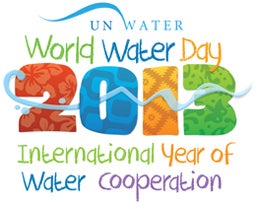
1 basin, 9 countries, 1 vision was in a brochure of one of the Council of Ministers meeting of the Niger Basin. The first time I saw that brochure I smiled as I right away thought about 9-1-1, the emergency telephone number used to respond to emergency circumstances in North America. It made me think about the numerous challenges that the Niger Basin faces.
This large Basin of 2 million square kilometers with a complex hydrology, running through nine countries, including its central part in the Sahel, has significantly untapped potential (agriculture, energy, etc.) that represents high stakes for large groups of communities, environmental degradation, and frequent water shocks (drought and floods). The Basin territory is also home to numerous political challenges, including instability and terrorism activities as highlighted by the ongoing events in Mali. Quite daunting when you look at it from this perspective, and it does give a sense of urgency.
The good news is that the nine countries of the Niger Basin have been working together through the Niger Basin Authority (NBA), which they have established to foster cooperation and achieve a common endeavor to sustainably manage and protect the basin. The NBA emerged in 1980 (from the now-defunct Niger River Commission) with a strategic mandate to promote cooperation among the member countries, to jointly develop the Basin’s water resources and harmonize national development policies.
Despite the periodic revisions made to the governing rules of the NBA and several attempts to overcome weak institutional, financial, technical and human capacity, little progress was made until the late 1990s, when the Heads of State and Government of the nine member countries decided to revitalize the cooperative framework of the Basin. This revitalization process, supported by the Bank jointly with other development partners, was called “the Shared Vision Process,” the one vision spelled out by the countries as follows: ‘‘The River Niger Basin, a common space of sustainable development through an integrated management of water resources and related eco-systems, for the enhancement of the living conditions and prosperity of the population by 2025.” The Shared Vision Process started in 2002 and was completed in 2008.
Noticeable achievements as a result of the Shared Vision Process include:
- a 20-year the Sustainable Development Action Plan for the Basin 2007 was approved by the Council of Ministers of the NBA;
- a 20-year investment program for the Basin and the Water Charter were approved in 2008 by the Heads of State and Government Summit, and
- the Water Charter was signed in 2009 and ratified in 2010. Also, Annexes to the Water Charter were prepared, the first adopted and signed in 2012 and the second is near completion.
More water development actions are needed in the Basin to address the numerous challenges, including the impacts of climate change. In the regional meetings of the Niger Basin countries the words “family,” “community” and “brotherhood” are heard a lot. This expresses the feeling of stakeholders considering themselves as one family sharing precious water resources and reflects their strong commitment to strengthen their joint efforts and work together to face the challenges. With this commitment, the basin under the leadership of the nine countries and following the spirit of the one vision has what it needs to overcome challenges.


Join the Conversation